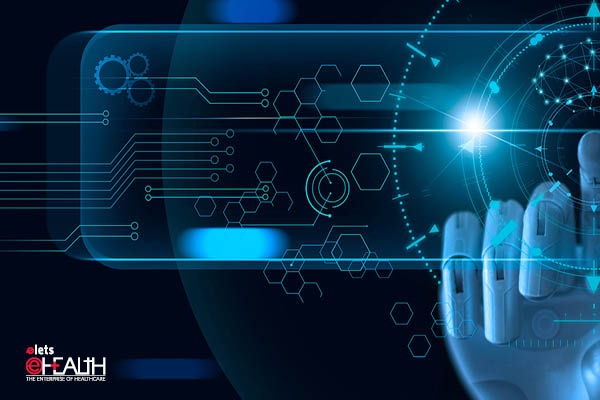
Strengthening of the digital ecosystem in the country is creating a robust base for holistic healthcare for the populace. With favourable policy measures, increasing technology usage, supporting infrastructure and growing knowledge about the advantages digital diagnostics & its elements offer have been the primary contributors to its growth.
Technology enablement of the healthcare ecosystem has unveiled a new chapter and also taken healthcare delivery beyond the city peripheries. With the launch of Ayushman Bharat Digital Health Mission, the digital footprint and its impact has initiated a slew of reforms. As reiterated through our extensive coverage of the sector in our prior editions, diagnostics form a crucial element of the healthcare sector. The glaring gaps in the existing healthcare system, with diagnostics placed at the fringe, were dramatically exposed as the country struggled to come to terms with the global pandemic.

The pandemic reiterated the need for timely and mass scale testing to curb the spread of the deadly corona virus, with the second wave further strengthening this belief. While the World Health Organisation study indicates the diagnostics sector to comprise less than 5 per cent of hospital costs, its findings influence more than 70 per cent of decision making in healthcare.

Graduating from traditional diagnostic procedures, the growing advancements in technology have led to the strengthening of digital diagnostics that are a type of technology that is used to support clinical decision making and improve patient outcomes. This technology includes a wide variety of tools such as electronic medical records, clinical decision support systems, and computer-aided diagnosis. Digital diagnostics have the potential to transform healthcare delivery by providing timely, accurate, and consistent information to clinicians. This technology has already begun to impact healthcare in a number of ways, including reducing the time to diagnosis, improving patient safety, and increasing the efficiency of care delivery.

According to an Edelweiss report, Indian diagnostics is one of the fastest-growing markets in the healthcare industry. The segment is projected to be estimated at $9 billion and grow at a CAGR of approximately 10 per cent by 2025. This growth is being driven by several factors, including the increasing prevalence of chronic diseases; the government’s focus on preventive healthcare, and rising awareness about the importance of early diagnosis. Technology interventions like digital diagnostic solutions are proving to be great enablers in enhancing the first line of treatment and also facilitating access to healthcare to remote regions.

“An important aspect of preventive care is timely diagnosis at the primary care level. Digital diagnostics can play a pivotal role here. Programs like National Digital Health Mission (NDHM) launched by the Government of India are bridging the gap amongst different stakeholders in the ecosystem through digital diagnostics. GOI has demonstrated that it is all hands on deck when it comes to digitisation/ digital diagnostics,” shared Runam Mehta, CEO, HealthCubed India Private Limited.
Digital diagnostics are transforming healthcare delivery by providing timelier, accurate, and consistent information to clinicians. This technology has already begun to impact healthcare in a number of ways, including reducing the time to diagnosis, improving patient safety, and increasing the efficiency of care delivery. As this technology continues to evolve, its impact on healthcare will only grow.
Current Diagnostic Outlook
Digital diagnostics is an important part of healthcare in India. There are many benefits of digital diagnostics, which include:
1. Early detection and diagnosis of diseases: Digital diagnostics can help in early detection and diagnosis of diseases. This is because digital diagnostic tools can be used to monitor the health of patients more closely.
2. Improved accuracy: Digital diagnostics can also improve the accuracy of diagnosis. This is because digital diagnostic tools can provide more accurate results than traditional diagnostic methods.
3. Reduced costs: Digital diagnostics can also help in reducing the costs associated with healthcare. This is because digital diagnostic tools can be used to replace expensive traditional diagnostic methods.
4. Increased access to healthcare: Digital diagnostics can also help in increasing the access to healthcare. This is because digital diagnostic tools can be used to reach remote areas where traditional healthcare facilities are not available.
5. Patient Safety: Another benefit of digital diagnostics is improved patient safety. This technology can help identify errors in care and make sure that patients receive the right treatments. In one hospital, using digital diagnostics resulted in a 70 per cent reduction in medication errors.
6. Efficiency of Care Delivery: In addition to reducing the time to diagnosis and improving patient safety, digital diagnostics can also increase the efficiency of care delivery.
One study found that using this technology was associated with a decrease in length of stay from 4 days to 2 days. Digital diagnostics can also reduce unnecessary testing and procedures, which can help save healthcare costs.
According to an industry report, ‘AI and digital technology are trying to bridge the obstacles in diagnostic issues and reach, skill resources and human capital, affordability etc. The report stated that Vision AI, Conversational AI, Sense AI, and Decision AI are active at every step of the healthcare value chain. At the global scale, the market for AI in healthcare is slated to grow at a CAGR of ~37 per cent from 2022 to 2030 to a value of ~US$ 188 B’.
Growth of Digital Diagnostics
Digital diagnostics are playing an increasingly important role in healthcare in India. The country’s strong digital ecosystem is creating a robust base for holistic healthcare, and diagnostics is one of the fastest-growing markets in the healthcare industry.
In India, digital diagnostics are still in a nascent stage but are expected to grow rapidly in the coming years. With the government’s focus on strengthening the healthcare infrastructure and increasing access to quality care, digital diagnostics will play an important role in transforming healthcare in India.
Future Outlook
Digital diagnostics are expected to grow rapidly in popularity in the coming years, thanks to the many advantages they offer. In particular, digital diagnostics are much more accurate than traditional methods, and can be performed quickly and easily. This makes them ideal for use in busy clinical settings, where time is often of the essence.
“Pathology digitisation will have its impact on education, through sharing online resources (scanned slides) nationally and internationally and reduction in cost of training. Additionally, DP is disruptive because it paves the way for computational pathology and artificial intelligence to transform pathology assessment from being qualitative (relying on subjective assessment by a pathologist) into quantitative assessment through image analysis. Its beyond doubt that the value of DP will redefine pathology practice. The replacement of glass slides with digital images, will revolutionise the workflow of pathology, make it faster & more efficient, bring flexibility in the workspace & working hours, reduce the error rate due to mixing up of cases ,help in integration into laboratory information systems and improve accessibility,” shared Dr Ravi Gaur, Founder & Director DRG Path Lab, New Delhi and Chairman Medical Advisory Committee Unipath Specialty Laboratories Ltd, Ahmedabad.
What’s more, digital diagnostics are becoming increasingly portable, making them even more convenient for both patients and clinicians. Some digital diagnostic devices can even be used at home, without the need for a visit to the doctor’s office. This is particularly useful for those with chronic conditions who need to monitor their health on a regular basis. Looking ahead, it is clear that digital diagnostics are set to revolutionize healthcare in India. With more accurate and convenient data sets than ever before, they offer huge potential for improving patient outcomes and reducing healthcare costs.
“These are just some of the emerging trends and technologies. India is expected to be the home of 25 high-end futuristic healthcare technologies and emerge as a champion in cancer diagnostics, critical components, medical imaging, ultrasonic scans, molecular imaging, and PCR technologies. We can see India playing a decisive role in diagnostics in the coming years, emerging out of the shadows and dominating the healthcare space,” shared Jatin Mahajan, Managing Director, J Mitra & Company.
Summing it up
Technology has always been a transformative force in healthcare, and nowhere is this more apparent than in the field of diagnostics. By harnessing the power of technology, we have been able to develop sophisticated tools for disease detection and diagnosis. These tools have helped to improve the accuracy of diagnosis, and they have also made it possible to detect diseases at an earlier stage. Often, this has led to better outcomes for patients.
Looking to the future, it is clear that technology will continue to play a vital role in diagnostic medicine. New and emerging technologies hold the promise of even more accurate and timely diagnosis. Additionally, these technologies may help to make healthcare more accessible and affordable for all. With the continued advancement of technology in diagnostics, we are poised to make tremendous strides in our fight against disease.
Be a part of Elets Collaborative Initiatives. Join Us for Upcoming Events and explore business opportunities. Like us on Facebook , connect with us on LinkedIn and follow us on Twitter , Instagram.
"Exciting news! Elets technomedia is now on WhatsApp Channels Subscribe today by clicking the link and stay updated with the latest insights!" Click here!
















